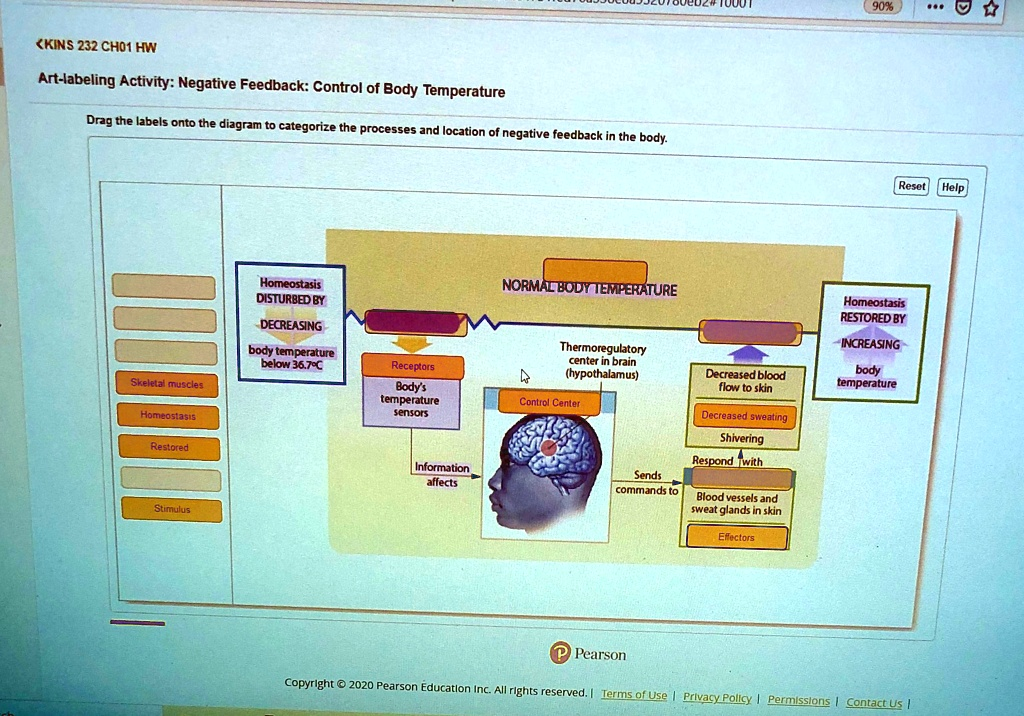‘9096 (KINS 232 Choi HW Art-labeling Activity: Negative Feedback: Control of Body Temperature Drag the labels onto the diagram to categorize the processes and location of negative feedback in the body: Reset] Help Homeostasis DISTURBED BY DECREASING NORMAL BODY TEMPERATURE Homeostasis RESTORED BY body temperature below 36.7°C Thermoregulatory center in brain (hypothalamus) INCREASING Receptors Decreased blood flow to skin Skeletal muscles Body’s temperature sensors body temperature Control – Central Homeostasis Decreased Sweating Shivering Respond With Information affects Sends commands to Blood vessels and sweat glands in skin Stimulus Effectors Pearson Copyright © 2020 Pearson Education Inc. All rights reserved. Terms of Use Privacy Policy Permissions Contact Us Restricted

The Correct Answer and Explanation is:
Here is the correct arrangement of the labels for the negative feedback regulation of body temperature:
- Stimulus: Homeostasis disturbed by decreasing body temperature below 36.7°C
- Receptors: Body’s temperature sensors
- Control Center: Thermoregulatory center in brain (hypothalamus)
- Sends commands to: Blood vessels and sweat glands in skin
- Effectors: Skeletal muscles
- Responses:
- Decreased blood flow to skin
- Decreased sweating
- Shivering
- Homeostasis Restored: Increasing body temperature
- Final state: Normal body temperature
Explanation
Negative feedback is a physiological mechanism that maintains homeostasis by reversing deviations from the body’s set points. In this example, the body responds to a decrease in temperature, which threatens internal balance.
The process begins when the body’s temperature drops below 36.7°C. This deviation is detected by thermoreceptors, specialized sensors in the skin and other regions of the body. These receptors send information to the thermoregulatory center in the hypothalamus, a part of the brain responsible for regulating body temperature.
The hypothalamus interprets the incoming signals and initiates corrective actions by sending neural commands to the effectors — namely skeletal muscles, blood vessels, and sweat glands. In response, shivering (involuntary muscle activity) generates heat through increased metabolic activity. Simultaneously, blood vessels constrict (vasoconstriction) to reduce heat loss from the skin’s surface, and sweating is inhibited to prevent evaporative cooling.
These coordinated actions raise the body’s core temperature. Once normal temperature is restored, the sensors detect this, and the hypothalamus reduces the corrective signals. This restoration of homeostasis confirms the loop is complete, demonstrating the self-limiting nature of negative feedback.
Negative feedback is vital because it counteracts changes rather than amplifying them, ensuring conditions such as temperature, pH, and glucose levels remain within narrow physiological ranges. Its failure can lead to dangerous consequences like hypothermia.
